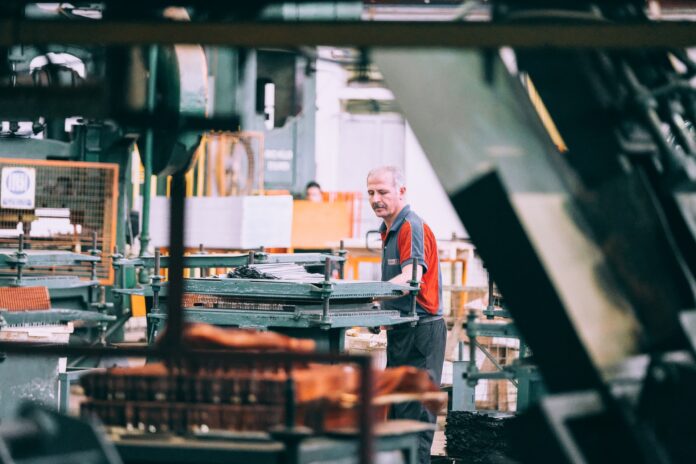Ever since the Industrial Revolution, manufacturing has been a major part of our economy. It’s not surprising that as technology evolves, and we find better ways to do things, many manufacturers are turning to new machines and methods. One such method is robotics, which has grown in popularity for various reasons. Some manufacturers are even adding these machines to their production lines to increase quality and efficiency.
Robots are machines that can be programmed to carry out certain tasks. This can include welding, assembling, or fabricating products. They have many advantages over human workers. For one, they’re not susceptible to fatigue, meaning they can work for longer hours than a human. They’re also more accurate and consistent, which can lead to a higher quality product. If you own a chemical manufacturing business, you should consider using quicklime product as it can help increase the quality of your product or even be used as a by-product because of its calcium and magnesium value. Find out more below.
1. Spiral Conveyor
One of the first on our list is a spiral conveyor. Created in the early 1900s, spiral conveyors are used to move products around a factory or warehouse. They take up less space than a typical, horizontal conveyor belt and can take things to different floors. They can be either powered or gravity-fed and can vary greatly in length and diameter. These allow for products to be easily moved from one place to another. This can increase efficiency and accuracy because the conveyor allows for product distribution to happen more quickly and smoothly. A Ryson spiral conveyor moves the product gently and smoothly through the manufacturing process. It is often used in conjunction with other machines to move products smoothly and efficiently from one step to the next.
2. Laser Cutter
A laser cutter is a machine that uses lasers to create products. It can cut through materials, such as paper, plastic, metal, or wood, without needing to use a blade of any kind. This makes it a very precise machine. It can be used to create products with intricate details or cut through large sheets of metal quickly. It is often used in the manufacturing of products that require precision, such as eyeglasses or car parts. This can be done by removing material through ablation (decreasing the thickness of the workpiece by vaporizing it with the laser), melting, or burning. Laser cutters are often used to create products from sheet metal. They come in a variety of forms, depending on their intended use. Some can be stationary, while others are portable.
3. 3D Printer
A 3D printer works by taking a three-dimensional model and producing it in real life through the additive process of laying down successive layers of material until the desired shape is formed. This technology uses any number of materials to create items like jewelry, toys, food, spare parts for machinery, medical implants, chocolate sculptures, shoes… The list goes on! They can print objects that are bigger than themselves by using their own platform as part of the product or moving it out of its way while it moves and prints the object. With this kind of technology becoming more accessible for consumers and businesses alike, many manufacturers are adding 3D printers to their production line in order to create prototypes or products on the spot.
4. CNC Router
A CNC (computer numerical control) router is a computer-controlled machine that can be programmed to cut materials such as wood, plastics, and metal. It does this by moving a cutting tool, such as a router bit, in a straight or curved line. The CNC router was first created in the 1960s but has become increasingly popular in recent years because of its precision and speed. It can be used to create products with intricate designs and to cut through things like plywood in a fraction of the time needed by hand. This can be useful for manufacturers who work with wood or other materials that are difficult to cut by hand.
The CNC router uses computer-aided design (CAD) software to create three-dimensional objects from a two-dimensional image. It works by first creating a flat sheet of material and then cutting it into the desired shape using a rotating cutter head. This technology has been used to create products like furniture, musical instruments, and medical implants.
5. Pick and Place Machine
A pick and place machine is a machine that is used to place components on a PCB (printed circuit board). It does this by using a vacuum head to pick up the component and place it on the board. This can be done one at a time or with many components at once, depending on what the machine is designed to do.
Pick and place machines are often used in the manufacturing of electronics. They are able to place components quickly and accurately, which is helpful if the product needs to be tested and must work as soon as it is completed.
6. Robotic Arms

A robotic arm is an assembly line machine that’s controlled by a computer and can be programmed to perform tasks such as welding, handling materials, lifting objects through suction cups, or painting. They come in many different forms depending on what their intended use is and which manufacturing processes they need to automate. Some of these arms are able to reach up to 200 degrees Celsius (400 degrees Fahrenheit) while others support heavy loads (like automobile engines). A robotic arm has many advantages over human workers: its strength allows it to work faster and more efficiently, and it is able to work twenty-four hours a day without tiring.
Manufacturing is always changing and evolving, especially by adding new technologies to make the industry more efficient. One of the newest technologies that have grown in popularity for various reasons are robots, which have been added to production lines in order to increase quality and efficiency. With this kind of technology becoming more accessible for consumers and businesses alike, many manufacturers have found it necessary to add 3D printers or CNC routers as well as robotic arms all on their production line in order to create prototypes or products on the spot with easily automated processes.





